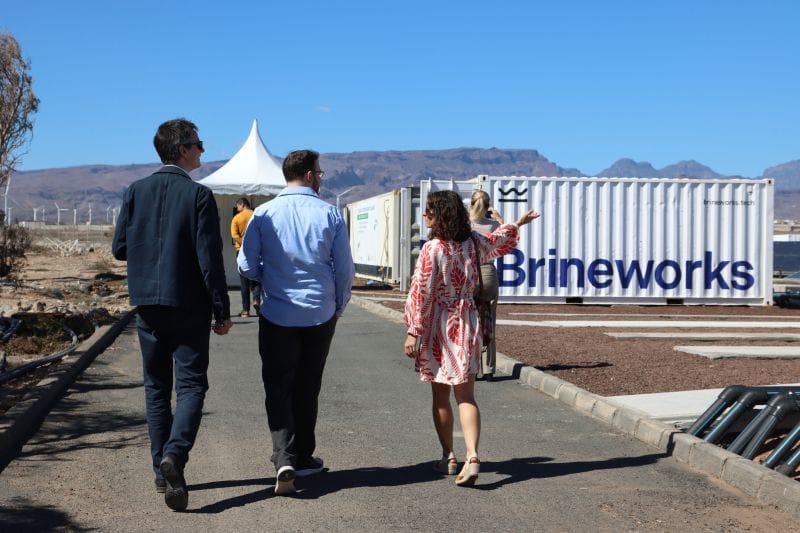Dutch Startup Brineworks Secures $7.3M to Scale Direct Air Capture for e-Fuels

- €6.8 million raised, plus €1.8 million EIC grant, positions Brineworks to pilot DAC-electrolyzer technology targeting sub-€100 per ton CO₂ capture.
- Flexible electrolyzer design co-produces hydrogen, creating feedstock for sustainable aviation fuel and e-methanol.
- Potential pathway to decarbonise aviation and shipping, sectors responsible for more than 5% of global CO₂ emissions.
Amsterdam bets on flexible carbon capture
Dutch climate tech company Brineworks has raised €6.8 million (US $7.3 million) in fresh funding to advance a new form of Direct Air Capture (DAC) technology designed to deliver carbon removal at below €100 per ton. The round, led by SeaX Ventures with participation from Pale Blue Dot, First Momentum, AiiM Partners, Energie360°, and Katapult, comes as policymakers and investors intensify scrutiny of aviation and shipping emissions.
The company, founded in 2023, is targeting commercial readiness by 2026 with a system that also produces hydrogen, the essential input for e-fuels. Earlier this year, Brineworks secured a €1.8 million grant from the European Innovation Council’s Accelerator program to accelerate pilot deployment.
DAC paired with hydrogen
At the core of Brineworks’ approach is a patented electrolyzer engineered to operate flexibly with renewable power. Unlike conventional systems, which degrade when turned on and off, the unit is designed to start and pause in sync with solar and wind availability.
“We’ve proven a clear path to capturing CO₂ directly from air at below $100 per ton,” said Joseph Perryman, co-founder and CTO. “That’s the threshold the world has been waiting for, and now the scale-up begins.”
The technology enables DAC and hydrogen co-production. Together, these streams provide the building blocks for synthetic fuels such as e-methanol and sustainable aviation fuel (SAF). For airlines and shipping companies under pressure from regulators and investors, the economics of such a system could provide a lifeline.
Aviation and shipping in focus
Aviation accounts for roughly 2.5% of global CO₂ emissions, while maritime shipping contributes more than 3%. Both industries face limited options to decarbonise at scale. Synthetic fuels offer a potential solution, but costs have remained prohibitive.
“Renewable energy is becoming cheaper faster than anyone predicted. The bottleneck now is technology that can use this power flexibly and affordably,” said CEO Gudfinnur Sveinsson. “That’s exactly what we’ve built.”
By aligning DAC with renewable generation, Brineworks aims to localise production of carbon-neutral fuels. If the model proves viable, it could allow countries to produce e-fuels domestically, reducing import dependency while contributing to climate targets.
Investor confidence in science-led solutions
Investors describe Brineworks’ approach as a step-change in carbon removal economics. “We’re always looking for visionary founders solving massive problems with science-backed solutions, and Brineworks is exactly that,” said Kid Parchariyanon, managing partner at SeaX Ventures. He added that supporting the company aligns with the fund’s goal of helping to cut 1% of the world’s carbon footprint.

The financing reflects a broader wave of venture and public funding moving into engineered carbon removal. European institutions, including the EIC, are prioritising projects that pair carbon capture with synthetic fuels, in part to meet transport decarbonisation targets set by Brussels.
RELATED ARTICLE: Poland to Launch First Direct Air Capture Facility in Kielce
Policy and market implications
If Brineworks achieves its target of commercial readiness by 2026, airlines could begin sourcing carbon-neutral fuel before 2030, supporting compliance with the EU’s ReFuelEU Aviation mandate and the International Maritime Organization’s decarbonisation strategy.
The sub-€100 per ton capture benchmark is particularly relevant to investors. Current DAC systems often operate at two to four times that cost, limiting their integration into fuel production at scale. Achieving that threshold would make DAC competitive with established offset markets while offering a verifiable, technology-based pathway.
Looking ahead
The next phase for Brineworks is scaling its electrolyzer-DAC system to pilot level, with demonstration projects expected in the next 18 months. For global energy and transport leaders, the outcome will be closely watched. Success could reshape the economics of synthetic fuels and offer a scalable solution to two of the hardest-to-abate sectors.
For investors and policymakers, Brineworks highlights the growing intersection of renewable integration, carbon removal, and industrial decarbonization. As nations look to secure domestic energy supplies while meeting net-zero commitments, technologies that merge these goals are gaining strategic importance.
Follow ESG News on LinkedIn








